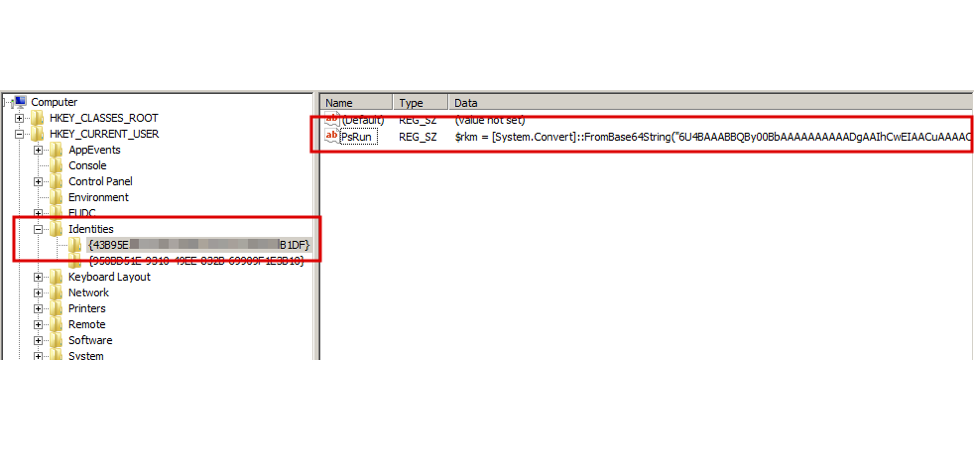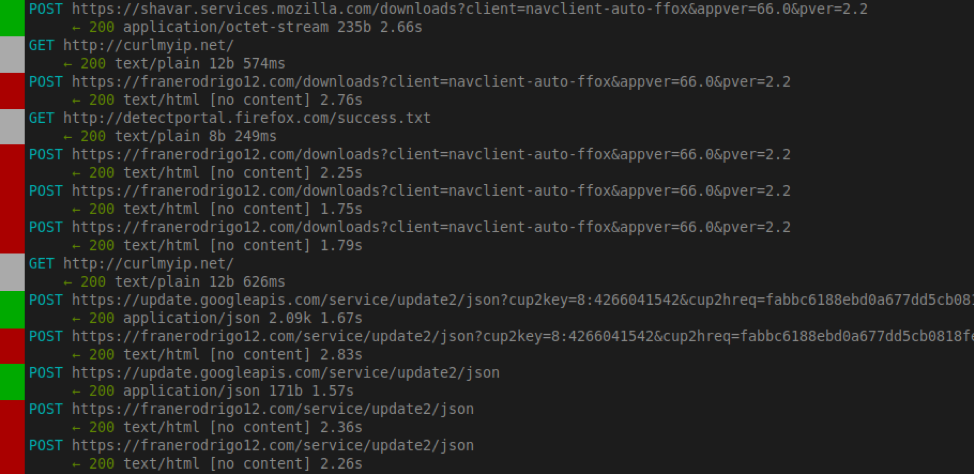SAIGON, the Mysterious Ursnif Fork
Mandiant
Written by: Sandor Nemes, Zander Work
Ursnif (aka Gozi/Gozi-ISFB) is one of the oldest banking malware families still in active distribution. While the first major version of Ursnif was identified in 2006, several subsequent versions have been released in large part due source code leaks. FireEye reported on a previously unidentified variant of the Ursnif malware family to our threat intelligence subscribers in September 2019 after identification of a server that hosted a collection of tools, which included multiple point-of-sale malware families. This malware self-identified as "SaiGon version 3.50 rev 132," and our analysis suggests it is likely based on the source code of the v3 (RM3) variant of Ursnif. Notably, rather than being a full-fledged banking malware, SAIGON's capabilities suggest it is a more generic backdoor, perhaps tailored for use in targeted cybercrime operations.
Technical Analysis
Behavior
SAIGON appears on an infected computer as a Base64-encoded shellcode blob stored in a registry key, which is launched using PowerShell via a scheduled task. As with other Ursnif variants, the main component of the malware is a DLL file. This DLL has a single exported function, DllRegisterServer, which is an unused empty function. All the relevant functionality of the malware executes when the DLL is loaded and initialized via its entry point.
Upon initial execution, the malware generates a machine ID using the creation timestamp of either %SystemDrive%\pagefile.sys or %SystemDrive%\hiberfil.sys (whichever is identified first). Interestingly, the system drive is queried in a somewhat uncommon way, directly from the KUSER_SHARED_DATA structure (via SharedUserData→NtSystemRoot). KUSER_SHARED_DATA is a structure located in a special part of kernel memory that is mapped into the memory space of all user-mode processes (thus shared), and always located at a fixed memory address (0x7ffe0000, pointed to by the SharedUserData symbol).
The code then looks for the current shell process by using a call to GetWindowThreadProcessId(GetShellWindow(), …). The code also features a special check; if the checksum calculated from the name of the shell's parent process matches the checksum of explorer.exe (0xc3c07cf0), it will attempt to inject into the parent process instead.
SAIGON then injects into this process using the classic VirtualAllocEx / WriteProcessMemory / CreateRemoteThread combination of functions. Once this process is injected, it loads two embedded files from within its binary:
- A PUBLIC.KEY file, which is used to verify and decrypt other embedded files and data coming from the malware's command and control (C2) server
- A RUN.PS1 file, which is a PowerShell loader script template that contains a "@SOURCE@" placeholder within the script:
The malware replaces the "@SOURCE@" placeholder from this PowerShell script template with a Base64-encoded version of itself, and writes the PowerShell script to a registry value named "PsRun" under the "HKEY_CURRENT_USER\Identities\{}" registry key (Figure 1).


Figure 1: PowerShell script written to PsRun
The instance of SAIGON then creates a new scheduled task (Figure 2) with the name "Power" (e.g. PowerSgs). If this is unsuccessful for any reason, it falls back to using the "HKEY_CURRENT_USER\Software\Microsoft\Windows\CurrentVersion\Run" registry key to enable itself to maintain persistence through system reboot.


Figure 2: Scheduled task
Regardless of the persistence mechanism used, the command that executes the binary from the registry is similar to the following:
After removing the Base64 encoding from this command, it looks something like "iex (gp 'HKCU:\\Identities\\{43B95E5B-D218-0AB8-5D7F-2C789C59B1DF}').PsRun." When executed, this command retrieves the contents of the previous registry value using Get-ItemProperty (gp) and executes it using Invoke-Expression (iex).
Finally, the PowerShell code in the registry allocates a block of memory, copies the Base64-decoded shellcode blob into it, launches a new thread pointing to the area using CreateRemoteThread, and waits for the thread to complete. The following script is a deobfuscated and beautified version of the PowerShell.
Once it has established a foothold on the machine, SAIGON loads and parses its embedded LOADER.INI configuration (see the Configuration section for details) and starts its main worker thread, which continuously polls the C2 server for commands.
Configuration
The Ursnif source code incorporated a concept referred to as "joined data," which is a set of compressed/encrypted files bundled with the executable file. Early variants relied on a special structure after the PE header and marked with specific magic bytes ("JF," "FJ," "J1," "JJ," depending on the Ursnif version). In Ursnif v3 (Figure 3), this data is no longer simply after the PE header but pointed to by the Security Directory in the PE header, and the magic bytes have also been changed to "WD" (0x4457).


Figure 3: Ursnif v3 joined data
This structure defines the various properties (offset, size, and type) of the bundled files. This is the same exact method used by SAIGON for storing its three embedded files:
- PUBLIC.KEY - RSA public key
- RUN.PS1 - PowerShell script template
- LOADER.INI - Malware configuration
The following is a list of configuration options observed:
Table 1: Configuration options
Communication
While the network communication structure of SAIGON is very similar to Ursnif v3, there are some subtle differences. SAIGON beacons are sent to the C2 servers as multipart/form-data encoded requests via HTTP POST to the "/index.html" URL path. The payload to be sent is first encrypted using Serpent encryption (in ECB mode vs CBC mode), then Base64-encoded. Responses from the server are encrypted with the same Serpent key and signed with the server's RSA private key.
SAIGON uses the following User-Agent header in its HTTP requests: "Mozilla/5.0 (Windows NT ; rv:58.0) Gecko/20100101 Firefox/58.0," where consists of the operating system's major and minor version number (e.g. 10.0 on Windows 10, and 6.1 on Windows 7) and the string "; Win64; x64" is appended when the operating system is 64-bit. This yields the following example User Agent strings:
- "Mozilla/5.0 (Windows NT 10.0; Win64; x64; rv:58.0) Gecko/20100101 Firefox/58.0" on Windows 10 64-bit
- "Mozilla/5.0 (Windows NT 6.1; rv:58.0) Gecko/20100101 Firefox/58.0" on Windows 7 32-bit
The request format is also somewhat similar to the one used by other Ursnif variants described in Table 2:
Table 2: Request format components
Capabilities
SAIGON implements the bot commands described in Table 3.
Table 3: SAIGON bot commands
Comparison to Ursnif v3
Table 4 shows the similarities between Ursnif v3 and the analyzed SAIGON samples (differences are highlighted in bold):
Table 4: Similarities and differences between Ursnif v3 and SAIGON samples
Figure 4 shows Ursnif v3's use of URL path mimicking. This tactic has not been seen in other Ursnif variants, including SAIGON.


Figure 4: Ursnif v3 mimicking (red) previously seen benign browser traffic (green) not seen in SAIGON samples
Implications
It is currently unclear whether SAIGON is representative of a broader evolution in the Ursnif malware ecosystem. The low number of SAIGON samples identified thus far—all of which have compilations timestamps in 2018—may suggest that SAIGON was a temporary branch of Ursnif v3 adapted for use in a small number of operations. Notably, SAIGON’s capabilities also distinguish it from typical banking malware and may be more suited toward supporting targeted intrusion operations. This is further supported via our prior identification of SAIGON on a server that hosted tools used in point-of-sale intrusion operations as well as VISA’s recent notification of the malware appearing on a compromised hospitality organization’s network along with tools previously used by FIN8.
Acknowledgements
The authors would like to thank Kimberly Goody, Jeremy Kennelly and James Wyke for their support on this blog post.
Appendix A: Samples
The following is a list of samples including their embedded configuration:
Sample SHA256: 8ded07a67e779b3d67f362a9591cce225a7198d2b86ec28bbc3e4ee9249da8a5
Sample Version: 3.50.132
PE Timestamp: 2018-07-07T14:51:30
XOR Cookie: 0x40d822d9
C2 URLs:
- https://google-download[.]com
- https://cdn-google-eu[.]com
- https://cdn-gmail-us[.]com
Group / Botnet ID: 1001
Server Key: rvXxkdL5DqOzIRfh
Idle Period: 30
Load Period: 300
Host Keep Time: 1440
RSA Public Key: (0xd2185e9f2a77f781526f99baf95dff7974e15feb4b7c7a025116dec10aec8b38c808f5f0bb21ae575672b1502ccb5c
021c565359255265e0ca015290112f3b6cb72c7863309480f749e38b7d955e410cb53fb3ecf7c403f593518a2cf4915
d0ff70c3a536de8dd5d39a633ffef644b0b4286ba12273d252bbac47e10a9d3d059, 0x10001)
Sample SHA256: c6a27a07368abc2b56ea78863f77f996ef4104692d7e8f80c016a62195a02af6
Sample Version: 3.50.132
PE Timestamp: 2018-07-07T14:51:41
XOR Cookie: 0x40d822d9
C2 URLs:
- https://google-download[.]com
- https://cdn-google-eu[.]com
- https://cdn-gmail-us[.]com
Group / Botnet ID: 1001
Server Key: rvXxkdL5DqOzIRfh
Idle Period: 30
Load Period: 300
Host Keep Time: 1440
RSA Public Key: (0xd2185e9f2a77f781526f99baf95dff7974e15feb4b7c7a025116dec10aec8b38c808f5f0bb21ae575672b1502ccb5c
021c565359255265e0ca015290112f3b6cb72c7863309480f749e38b7d955e410cb53fb3ecf7c403f593518a2cf4915
d0ff70c3a536de8dd5d39a633ffef644b0b4286ba12273d252bbac47e10a9d3d059, 0x10001)
Sample SHA256: 431f83b1af8ab7754615adaef11f1d10201edfef4fc525811c2fcda7605b5f2e
Sample Version: 3.50.199
PE Timestamp: 2018-11-15T11:17:09
XOR Cookie: 0x40d822d9
C2 URLs:
- https://mozilla-yahoo[.]com
- https://cdn-mozilla-sn45[.]com
- https://cdn-digicert-i31[.]com
Group / Botnet ID: 1000
Server Key: rvXxkdL5DqOzIRfh
Idle Period: 60
Load Period: 300
Host Keep Time: 1440
RSA Public Key: (0xd2185e9f2a77f781526f99baf95dff7974e15feb4b7c7a025116dec10aec8b38c808f5f0bb21ae575672b15
02ccb5c021c565359255265e0ca015290112f3b6cb72c7863309480f749e38b7d955e410cb53fb3ecf7c403f5
93518a2cf4915d0ff70c3a536de8dd5d39a633ffef644b0b4286ba12273d252bbac47e10a9d3d059, 0x10001)
Sample SHA256: 628cad1433ba2573f5d9fdc6d6ac2c7bd49a8def34e077dbbbffe31fb6b81dc9
Sample Version: 3.50.209
PE Timestamp: 2018-12-04T10:47:56
XOR Cookie: 0x40d822d9
C2 URLs
- http://softcloudstore[.]com
- http://146.0.72.76
- http://setworldtime[.]com
- https://securecloudbase[.]com
Botnet ID: 1000
Server Key: 0123456789ABCDEF
Idle Period: 20
Minimum Uptime: 300
Load Period: 1800
Host Keep Time: 360
RSA Public Key: (0xdb7c3a9ea68fbaf5ba1aebc782be3a9e75b92e677a114b52840d2bbafa8ca49da40a64664d80cd62d9453
34f8457815dd6e75cffa5ee33ae486cb6ea1ddb88411d97d5937ba597e5c430a60eac882d8207618d14b660
70ee8137b4beb8ecf348ef247ddbd23f9b375bb64017a5607cb3849dc9b7a17d110ea613dc51e9d2aded, 0x10001)
Appendix B: IOCs
Sample hashes:
- 8ded07a67e779b3d67f362a9591cce225a7198d2b86ec28bbc3e4ee9249da8a5
- c6a27a07368abc2b56ea78863f77f996ef4104692d7e8f80c016a62195a02af6
- 431f83b1af8ab7754615adaef11f1d10201edfef4fc525811c2fcda7605b5f2e [VT]
- 628cad1433ba2573f5d9fdc6d6ac2c7bd49a8def34e077dbbbffe31fb6b81dc9 [VT]
C2 servers:
- https://google-download[.]com
- https://cdn-google-eu[.]com
- https://cdn-gmail-us[.]com
- https://mozilla-yahoo[.]com
- https://cdn-mozilla-sn45[.]com
- https://cdn-digicert-i31[.]com
- http://softcloudstore[.]com
- http://146.0.72.76
- http://setworldtime[.]com
- https://securecloudbase[.]com
User-Agent:
- "Mozilla/5.0 (Windows NT ; rv:58.0) Gecko/20100101 Firefox/58.0"
Other host-based indicators:
- "Power" scheduled task
- "PsRun" value under the HKCU\Identities\{} registry key
Appendix C: Shellcode Converter Script
The following Python script is intended to ease analysis of this malware. This script converts the SAIGON shellcode blob back into its original DLL form by removing the PE loader and restoring its PE header. These changes make the analysis of SAIGON shellcode blobs much simpler (e.g. allow loading of the files in IDA), however, the created DLLs will still crash when run in a debugger as the malware still relies on its (now removed) PE loader during the process injection stage of its execution. After this conversion process, the sample is relatively easy to analyze due to its small size and because it is not obfuscated.
